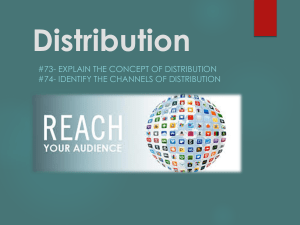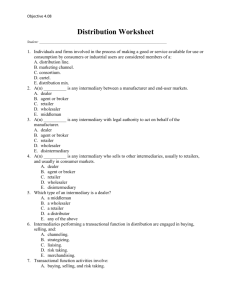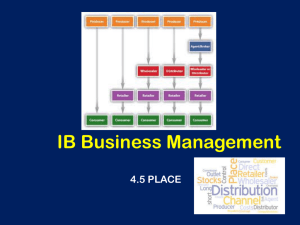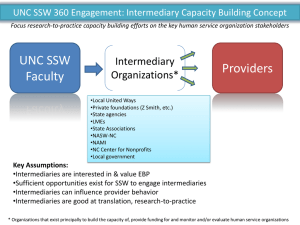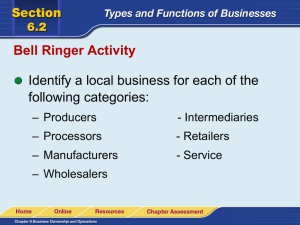distribution - introduction
advertisement
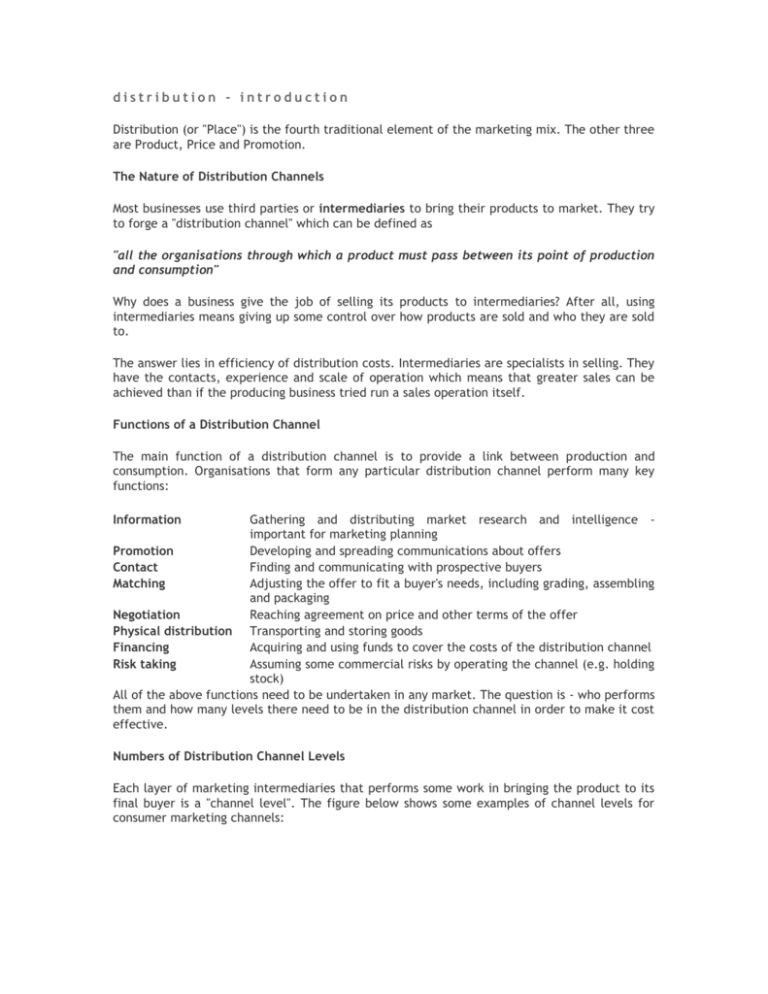
distribution - introduction Distribution (or "Place") is the fourth traditional element of the marketing mix. The other three are Product, Price and Promotion. The Nature of Distribution Channels Most businesses use third parties or intermediaries to bring their products to market. They try to forge a "distribution channel" which can be defined as "all the organisations through which a product must pass between its point of production and consumption" Why does a business give the job of selling its products to intermediaries? After all, using intermediaries means giving up some control over how products are sold and who they are sold to. The answer lies in efficiency of distribution costs. Intermediaries are specialists in selling. They have the contacts, experience and scale of operation which means that greater sales can be achieved than if the producing business tried run a sales operation itself. Functions of a Distribution Channel The main function of a distribution channel is to provide a link between production and consumption. Organisations that form any particular distribution channel perform many key functions: Information Gathering and distributing market research and intelligence important for marketing planning Promotion Developing and spreading communications about offers Contact Finding and communicating with prospective buyers Matching Adjusting the offer to fit a buyer's needs, including grading, assembling and packaging Negotiation Reaching agreement on price and other terms of the offer Physical distribution Transporting and storing goods Financing Acquiring and using funds to cover the costs of the distribution channel Risk taking Assuming some commercial risks by operating the channel (e.g. holding stock) All of the above functions need to be undertaken in any market. The question is - who performs them and how many levels there need to be in the distribution channel in order to make it cost effective. Numbers of Distribution Channel Levels Each layer of marketing intermediaries that performs some work in bringing the product to its final buyer is a "channel level". The figure below shows some examples of channel levels for consumer marketing channels: In the figure above, Channel 1 is called a "direct-marketing" channel, since it has no intermediary levels. In this case the manufacturer sells directly to customers. An example of a direct marketing channel would be a factory outlet store. Many holiday companies also market direct to consumers, bypassing a traditional retail intermediary - the travel agent. The remaining channels are "indirect-marketing channels". Channel 2 contains one intermediary. In consumer markets, this is typically a retailer. The consumer electrical goods market in the UK is typical of this arrangement whereby producers such as Sony, Panasonic, Canon etc. sell their goods directly to large retailers such as Comet, Dixons and Currys which then sell the goods to the final consumers. Channel 3 contains two intermediary levels - a wholesaler and a retailer. A wholesaler typically buys and stores large quantities of several producers goods and then breaks into the bulk deliveries to supply retailers with smaller quantities. For small retailers with limited order quantities, the use of wholesalers makes economic sense. This arrangement tends to work best where the retail channel is fragmented - i.e. not dominated by a small number of large, powerful retailers who have an incentive to cut out the wholesaler. A good example of this channel arrangement in the UK is the distribution of drugs
